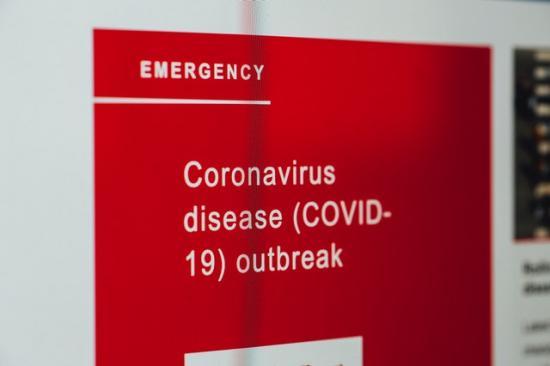Jerusalem Post WORLD NEWS Protecting your loved ones amid the coronavirus pandemic
From what needs deep cleaning to what to stock in your medicine cabinet
It’s starting to get hard to see the light at the end of the tunnel. It doesn’t help matters that there’s so much conflicting information going around, which is why we turned to leading experts to find out exactly how and what we should be cleaning, what to look for when shopping for disinfecting products (did you know hormone disruptors are lurking in many household products?), how to stock your medicine cabinet, tips for warding off the blues, and more. Cleaning in the age of coronavirus
We’ve all heard that we need to wash our hands to help hamper the spread of coronavirus, but the exact precautionary measures can be confusing at best and conflicting at worst.“The first thing you’ll want to know is that cleaning and disinfecting are two very different things,” says health and wellness expert Dr. Roger Sahoury. “Cleaning is about removing contaminants from a surface, while disinfecting is about killing pathogens. Transmission from person to person is a much greater risk than transmission via surfaces.” He goes on to underline that it’s nonetheless important to clean and disinfect high-touch surfaces in our homes at least once daily, assuming we have had contact with the outside world, either a person leaving and returning or goods coming in. These surfaces include doorknobs, tables, kitchen counters, sinks, faucets, toilets seats, light switches, and remotes. “We must be vigilant. Anything you touch should be cleaned.”Clean air is critical right now, so if you have an air purifier, use it.
"As for handwashing, you’ve heard it a million times, but the best way to lower your risk of contracting COVID-19 is to wash your hands after you cough, sneeze, touch your face, use the restroom, or are about to leave one place for another.” The mechanical act of scrubbing breaks the virus apart. The rule of thumb is to wash for 20 seconds. But it doesn’t end there. The virus can live on your clothing for hours, so washing your clothing with regular laundry soap and drying it at a slightly higher temperature than you might otherwise is critical.Bottom line: If you’re in contact with anyone or any deliveries, wash your hands and remove and wash clothing.
Harmful ingredients in cleaning and disinfecting materials
While cleaning and disinfecting are on everybody’s mind, the products available are not all created equally.“We have to remember that disinfectants are made with a purpose of killing organisms and are therefore inherently made to be toxic,” says Kimia Arounian, an echocardiographer and the voice behind @labels_matter. “There are many active ingredients that can do this, but some are safer than others.” As a rule of thumb, when it comes to both cleaning and disinfecting products, you’ll want to avoid anything with fragrances, as these are usually proprietary meaning they don’t need to be listed on labels.
“Many products can contain thousands of chemicals that create a certain scent, but because we have no way of knowing what those chemicals are, we have no way of knowing if they’re safe,” says Arounian. “Phthalates, for example, are often used in fragrances, but they’re considered endocrine disruptors and research indicates that they increase the risk of allergies and asthma and can affect children’s neurodevelopment and thyroid function.”
But it doesn’t end there. “Chlorine bleach is highly irritating and corrosive to the skin, lungs, and eyes,” says Marilee Nelson, environmental and building materials expert and the co-founder of Branch Basics. “Fumes from bleach can cause DNA damage, cancer, asthma and a host of other illnesses.You’ll also want to dig into your products and find out what surfactants are used as many are known carcinogens, have toxic byproducts, and are skin irritants. “The exceptions are coco glucoside, lauryl glucoside, and decyl glucoside.”
Also try to avoid products with ingredients endings of “ol” or “ene,” which Nelson says are likely an indication of potentially harmful petroleum-based ingredients. Lastly, some of the most popular products have antibacterial ingredients that are pesticides such as methylisothiazolinone and benzisothiazolinone, which are known skin irritants and are considered neurotoxic. If you’re not up to deciphering labels, a quick method is to look for products with the shortest ingredients list and to use disinfecting products only when absolutely necessary.
“Cleaning products remove dirt and germs, but don’t kill germs,” says Dr. Aly Cohen, co-author of Non-Toxic: Guide to Living Healthy in a Chemical World. “This can be done with products that are a lot less harmful than stronger chemicals used to remove infectious bacteria and viruses.”For hand washing, we can use simple cleaning products.
“Use hand sanitizer only If soap and water are not available because of the danger of creating resistant bacteria with too-frequent use,” says Nelson. “With COVID-19, however, disinfection is critical for the home, especially on handles, switches, and surfaces like tables. In this case, I suggest using disinfectants made with essential oils or products with at least 70% alcohol after cleaning with plain soap and water, as otherwise the dirt and grease will interfere with the germ-killing abilities of disinfectants.”
Medicine cabinet essentials
Try as you may to avoid it, you might get sick while quarantined. Dr. Tzvi Doron, the SVP of clinical practice and education at telehealth company Ro and Dr. Lynette Charity, an anesthesiologist, outline the essentials you’ll want to make sure to have stocked in your medicine cabinet.





















